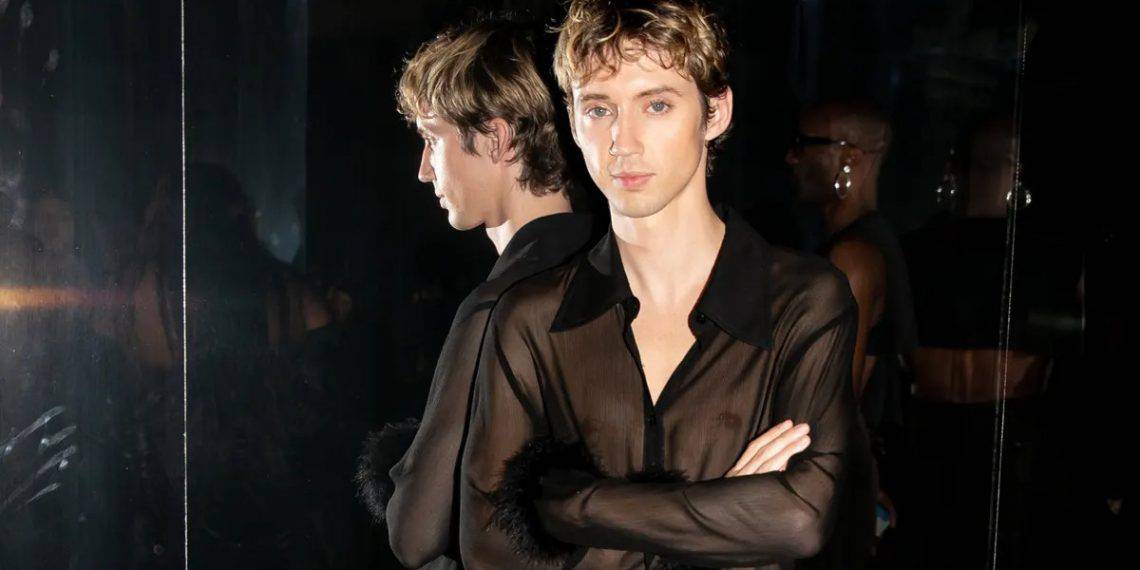The elegant song “One of Your Girls,” off Troye Sivan’s third album, “Something to Give Each Other,” has a Daft Punk influence. His interactions with males who were interested in him and exploring same-sex relationships for the first time inspired the song.
With lyrics such as “Give me a call if you ever get lonely / I’ll be like one of your girls or your homies” and a robotically sad voice, it emits a blend of romanticism, sensuality, and melancholy. It serves as a reminder that even popular figures have similar experiences.
Troye Sivan, who was born in South Africa and raised in Perth, Western Australia, rose to fame in the 2000s and 2010s because of his adolescent YouTube channel. 2013 saw his signing with Universal Music. “Blue Neighbourhood,” his debut album, debuted in 2015 and peaked at No. 7 on the Billboard 200 albums chart.
His second album, “Bloom,” which was released in 2019, won praise for its nuanced and cerebral approach to pop music. With “Something to Give Each Other,” Sivan offers a more developed and finished album. This is a reflection of his greater confidence and a sense of being unburdened in his musical expression rather than any forced attempts towards darkness or experimentation.
The Rush is like a personal diary of Sivan’s
The album has the effect of being a personal journal that is being turned through to recall a special summer. It includes songs that sound like they were hand-picked samples from Troye Sivan’s music library. Examples include the Bag Raiders’ “Shooting Stars” from “Got Me Started” and Jessica Pratt’s “Back Baby” by a lesser-known Los Angeles singer-songwriter.
Sivan greatly admires “Back Baby,” which has a classic quality that suggests it could have been around for centuries. The album’s emotional focal point is the song borrowed from Pratt’s work, “Can’t Go Back Baby,” which delivers a moving ballad about a breakup in which Sivan’s voice blends with Pratt’s sincere vocals.

Sivan wanted to just go ballistic
The album’s tone is very different from that of its lead single, “Rush.” The controversial music video for this song, which includes Troye Sivan dancing in darkly lit club areas and posing beside a bathroom glory hole in Berlin, as well as its blend of Village People-like and Ibiza-inspired sounds, helped to draw some attention to it early this year.
Sivan attended gay clubs on Smith Street in Melbourne during the times between Covid lockdowns to let loose and have fun.
The time that inspired “Something to Give Each Other” wasn’t a time of sadness; rather, it was a time when he was having a lot of fun and felt like he was rediscovering the world after a long time in a new and fascinating way.
When the “Rush” music video was released, numerous fans complained that Troye Sivan didn’t portray various body types. Sivan, who is used to getting comments online, said: “I anticipate critiques all the time, as I spend enough time on the internet to realize that people enjoy expressing their opinions about things, and I think that’s a great aspect of it.” He continued, saying that while it would be difficult for him if everyone disapproved, fortunately, the sentiment wasn’t shared.
While there may have been legitimate criticisms of the “Rush” video, it’s noteworthy that not many people have complained about the use of primarily thin models in recent music videos by artists like Olivia Rodrigo and Jennie of Blackpink. Troye Sivan emphasizes that when it comes to these matters, gay musicians frequently have to meet very high criteria.
Additionally, he draws attention to double standards, where certain artists may not face the same kind of backlash for the same decisions as others. He is aware of this viewpoint and that there is a need for greater understanding and empathy because they are a minority group.





